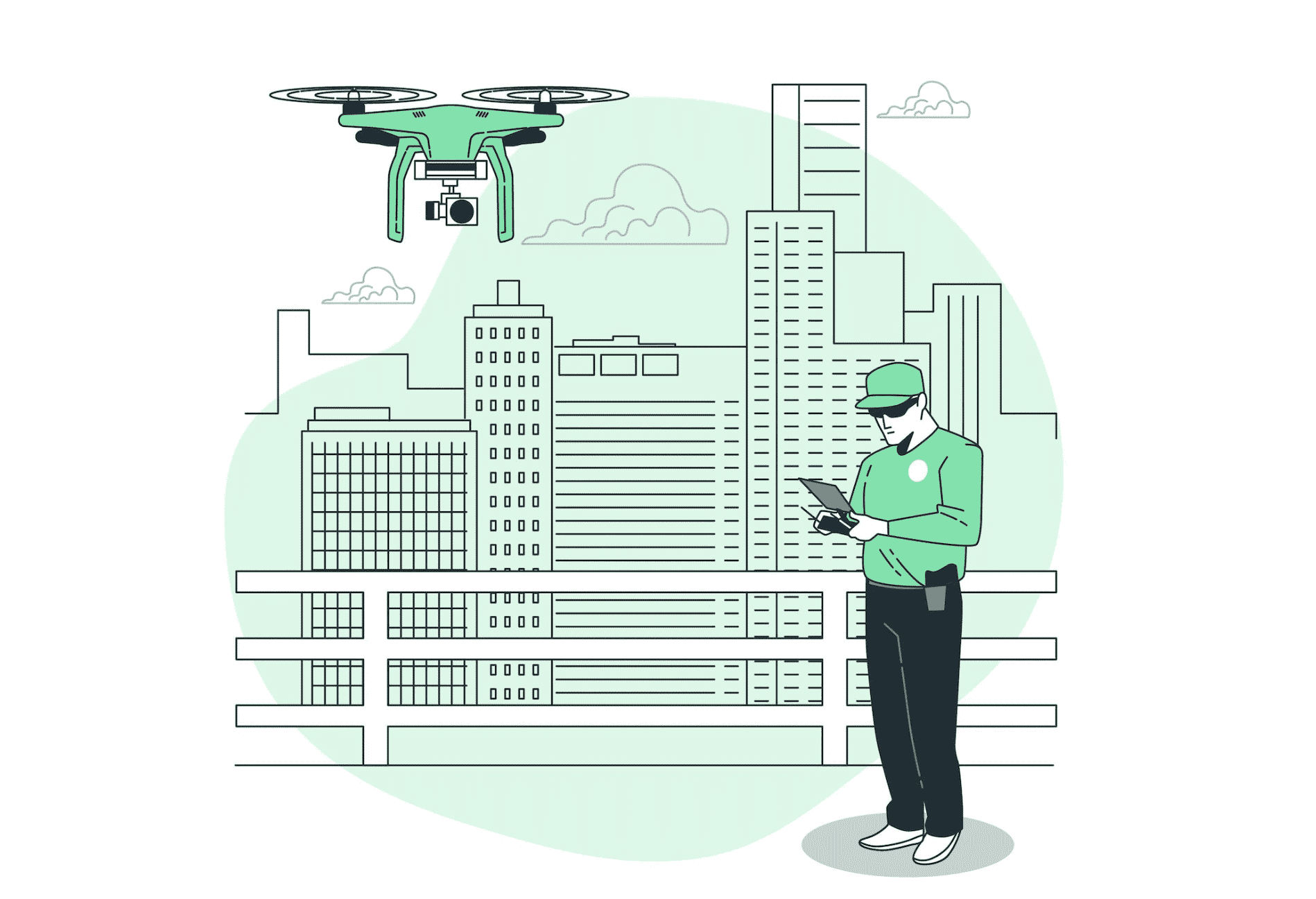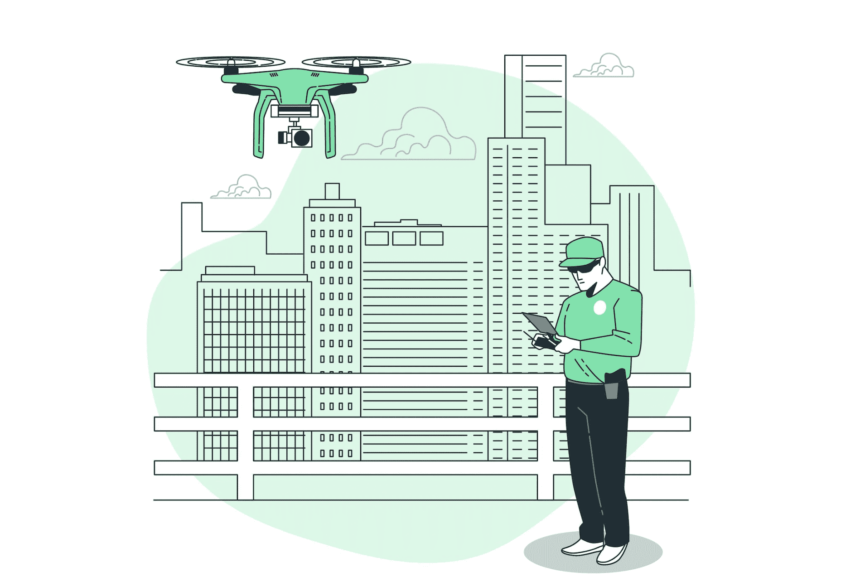
Introduction
In this digital age, we rely on technology more than ever before to keep our lives organized and running smoothly. From keeping track of our schedules to managing our finances, there’s no denying technology’s vital role in our lives.
But what about when it comes to protecting our homes and businesses? How can we ensure that our physical security is as strong as possible? Turns out, artificial intelligence (AI) may be able to help us out here too!
This blog post will take a closer look at how we can use AI to optimize physical security. Keep reading for more information.
Table of contents
Improving situational awareness
Let’s start with one of the most important aspects of physical security: situational awareness. Situational awareness is all about being aware of what’s going on around you and being able to identify potential threats. It’s the human equivalent of seeing the big picture and understanding how all the pieces fit together.
For example, a basketball player with good situational awareness will be able to see the positions of all of their teammates and opponents on the court and the direction the ball is moving. They’ll be able to anticipate where the ball will end up and make a play accordingly.
In a security context, situational awareness is just as important. We’re already seeing artificial intelligence helping drivers stay safe on the road. It provides real-time information about the positions of other vehicles and potential hazards. Lane departure warnings and automatic emergency braking are just a few of the ways AI is used to improve situational awareness in the automotive industry.
In fact, some vehicles are even equipped with 360-degree cameras. These give drivers a bird’s eye view of their surroundings, allowing them to avoid potential accidents. Fully automated cars will eventually be able to take this one step further by constantly scanning the environment. They will watch for possible threats and make split-second decisions to avoid them.
LIDAR systems are currently the most promising technology with which AI is being used for improved situational awareness in the automotive industry. It uses lasers to create a 3D map of the environment.
Optimize Perimeter Protection
Perimeter protection has been around for centuries in one form or another. From castles and fortifications to modern-day fences and gates, humans have always looked for ways to protect their homes. What started as guards and dogs patrolling perimeters has now evolved into a high-tech industry with sophisticated sensors and alarm systems.
The next logical step in perimeter defense would be integrating artificial intelligence. AI-enabled security cameras are already being used in some places for things like license plate recognition. Using video analytics, these cameras can be programmed to look for specific behavior patterns and raise the alarm when they’re detected.
One example of a behavior pattern that AI-enabled security cameras can detect is loitering detection. By analyzing people’s movements in the camera’s field of view, the system can determine if someone is lingering in an area where they shouldn’t be. This information can then be used to dispatch security personnel to investigate the situation.
AI can also reduce false alarms by only raising the alarm when it is warranted. That means animals walking by a camera or a gust of wind triggering a motion sensor will no longer cause alarm. This not only saves security personnel time and resources but also helps to reduce the overall stress levels in high-security environments.
Finally, businesses can use AI to analyze “big data.” This collection of data is too large and complex for traditional data-processing applications to deal with. By using machine learning algorithms, businesses can make sense of this data and use it to improve their perimeter protection.
A business might use big data to map out delivery trucks’ routes to and from their facility. They could then use this information to identify vulnerabilities in their perimeter security. Maybe the trucks are taking a more prolonged course than necessary, or they’re passing by areas known for crime. Either way, we can use this information to make changes to the route or the security procedures to ensure that the trucks are safe.
Control unauthorized entries
Another way AI can help us optimize physical security is by controlling unauthorized entries. Traditionally, a security guard would be stationed at the door to check IDs and issue visitor badges. But with AI-enabled security systems, businesses can automate this process. The end result is lower costs and freeing up security personnel for other tasks.
In the case of revolving doors or other high-traffic areas, an AI-enabled security system can be used to prevent piggybacking. Piggybacking is when someone follows someone else through a door without going through the proper security procedures. It can be a significant security risk, as it allows unauthorized people to gain access to a building.
An AI-enabled security system can also look for weapons or other prohibited items before someone enters a building. This is done using x-ray or thermal imaging to scan people as they walk through a door. If the system detects anything that it deems to be a threat, it can raise the alarm and automatically alert security personnel.
Access Control Systems
In a similar vein, companies can also use AI to improve access control systems. Access control systems are used to grant or deny entry or software access to people based on their identity. On the other side, we often find sensitive information or restricted locations. This measure is usually enforced by requesting some form of credentials, like a key card or fingerprint.
Businesses can now use biometrics like facial recognition or iris scanning to verify a person’s identity. It is more secure than using a key card, as it’s much harder to fake biometrics than to fake a key card. Plus, touchless biometrics are becoming increasingly popular in the wake of the COVID-19 pandemic.
Another way we can use AI to improve access control systems is by using it to monitor people’s movements. By tracking people’s whereabouts, businesses can ensure that only authorized personnel can access certain areas. This information can also be used to investigate security breaches or other unusual activity.
Robot and Drone Patrol
When most people think of security guards, they picture a human being patrolling a property with a flashlight at night. But with the help of AI, businesses can now use robots and drones to patrol their premises.
Robots and drones are equipped with sensors that allow them to see in the dark and detect movement. They can be fitted with cameras that enable security personnel to remotely monitor a property. They can also be programmed to follow specific routes or investigate suspicious activity.
Using robots and drones for security purposes has a number of advantages over traditional methods. For one, they never get tired and can patrol a property for 24 hours a day. They also don’t need breaks or vacation days. And since they’re not human, they can’t be bribed or threatened into letting someone into a property.
Drones have the added advantage of flight, which provides them with a unique perspective when it comes to security. They can quickly and easily survey a large property, making them ideal for businesses with large campuses. From their vantage point, they can use heat-sensitive cameras to detect trespassers.
Crowd Monitoring
Lastly, AI can keep us safe by monitoring crowds. When too many people are in one place, it can create a safety hazard. By tracking people’s movements, businesses can ensure that their premises are not overcrowded. This information can also be used to help with emergency evacuations or to prevent stampedes.
A recent example was the Travis Scott concert at the Astroworld Festival in Houston, Texas. According to reports, over 50,000 people attended the concert, many times the capacity of the venue. This led to a phenomenon known as “crowd crush”, where 10 people died and hundreds were injured, as the crowd became too dense and people were trampled.
Source: YouTube
If law enforcement had used AI to monitor the crowd, it could have detected that the venue was becoming overcrowded and alerted authorities. Security personnel onsite also had trouble getting to the victims due to the dense crowd. With AI, a third party could have directed security personnel to the optimal location to provide assistance.
Finally, AI in crowd monitoring applications can also be used to identify potential threats. By analyzing people’s behavior, AI can flag unusual activity that could be indicative of a problem. From fights breaking out to people leaving packages behind, AI can help keep us safe by detecting potential threats before they happen.
Conclusion
Artificial intelligence is already changing the way we live and work. And as it continues to evolve, it will have an increasingly important role to play in keeping us safe. Whether it’s used for access control, security patrols, or crowd monitoring, AI is making our world a safer place.











